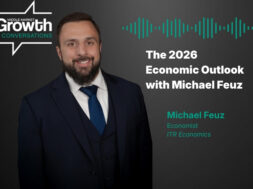Consumer M&A Muddles Through Amid Mixed Spending Habits
Dealmakers take a wait-and-see approach to consumer M&A, even as inflation cools and interest rates drop

It’s been a rough handful of years for consumer companies. The consumer sector—which includes segments like travel and leisure as well as everyday expenses like groceries—was hit hard by the pandemic, supply chain issues, inflation and macroeconomic uncertainty, and recovery has been uneven at best.
Even as inflation cools amid a long-awaited interest rate cut announced by the Federal Reserve earlier this month, many sponsors are still waiting on the sidelines.
Kristian Herrmann, a partner in the M&A and Private Equity Group at law firm Proskauer, anticipates a high rate of dispersion within the consumer sector to continue at least over the next 12 to 18 months. “We’re seeing deals get done with companies that have been resistant to macroeconomic conditions and have strong cash flow—many of those deals are home run-type deals,” he says. “But we’re also seeing more bankruptcies, workouts and takeovers.”
According to bankruptcy filing data from S&P Global Market Intelligence, there have been 69 filings in the consumer discretionary sector so far this year—the highest number of any sector in the economy. In June, for instance, outdoor and athletic gear retailers Eastern Mountain Sports and Bob’s Stores, which are both owned by GoDigital Media Group, filed jointly for Chapter 11 bankruptcy. Meanwhile, perfumes and cosmetics company Avon International Operations also sought bankruptcy protection in August, citing over $1 billion in debt.
While an uptick in consumer bankruptcies creates clouds in the industry, experts point out that pockets of the sector still show promise.
“It really depends on the company,” adds Herrmann. “It’s hard to take a broad brush to consumer given the diversity of companies in this sector and many competing trends.”
It’s hard to take a broad brush to consumer given the diversity of companies in this sector and many competing trends.
Kristian Herrmann
Proskauer
Uneven Spend, Uneven Deal Flow
Companies in sectors that offer discretionary services, like hospitality, are still under pressure, says Herrmann. If consumers are paying higher prices across the board, they are going to focus on essential needs first. But part of what makes the performance of consumer companies hard to predict is that consumer sentiment and spending change constantly.
According to recent data from McKinsey & Company, consumer sentiment fell as a result of inflation and has only recently started to improve. However, sentiment doesn’t directly correlate to an unwillingness to spend. Consumers in the McKinsey survey reported an intent to increase spending on essentials like groceries as well as semi-discretionary goods like beauty products or fitness. But that doesn’t mean the increase in spending is going to be evenly distributed.
Value chains like Walmart and wholesale clubs have reported an uptick in online and foot traffic, while grocery stores and upmarket retailers are looking at lowering prices to bring shoppers back. But it may not be easy. Input costs like shelf space rental fees, commodity and materials prices, and labor have all risen, tightening margins and potentially limiting how much prices can drop.
Herrmann sees a similar trend in restaurants. Consumers report that they are willing to continue spending on food and drink, but pricing has an impact. “We all know menu prices are up everywhere,” he says. “You really start to see the pressure in the middle, though. If someone is willing to go out to eat and the menu prices at somewhere like a casual dining chain aren’t materially different from the prices at a fine dining chain, you’re probably going to go to a fine dining chain. That puts pressure on the concepts that are in that middle tier because they have to contend with higher input costs—but they don’t have the same stickiness in the customer base.”
Time of year also has an impact. Many sponsors started the year believing interest rates were likely to come down at some point in the first half, but it wasn’t until Sept. 18 that a cut materialized. That could support M&A activity, but sources say buyers and sellers are likely waiting for the outcome of the U.S. election and what that might portend for interest rates and corporate taxes before making big moves.
Opportunistic Entry and a Tough Exit
The diversity of businesses within the consumer sector provides some resilience for dealmakers.
Kenneth Wasik, who leads the consumer group and is co-head of investment banking at Capstone Partners, says that strategic buyers have money to spend and are taking a close look at consumer companies. Many of them are making platform acquisitions or looking for deals in essential services like HVAC, cleaning and landscaping, or in areas of retail like beauty where consumers are reliably spending.
Private equity sponsors also see the potential in pockets of the consumer sphere.
In July, Capstone advised CP Medical on its sale to Riverpoint Medical. CP Medical sells medical supplies to veterinarians. In March, a group of sponsors including Sixth Street, Silver Lake, Ares Management, HPS Investment Partners and L Catterton made a $1.8 billion strategic investment in Equinox Holdings, the parent company of Equinox gyms, to support the growth of that business.
Justin Green, partner and co-head of flagship funds at Palladium Equity Partners, a consumer-focused private equity firm, says they’re targeting areas with opportunities for consolidation or the introduction of new product lines, as well as recession-resistant niches where consumer spending remains resilient.
“We’ve made investments in food distribution recently—we think the supply chain thesis is very strong. We’re also investing in companies that have a strong Hispanic consumer base,” he says. “There are a lot of positive demographic trends that make Hispanic-focused brands interesting as an investment theme.”
Green adds that home entertainment companies and residential services companies are also attracting dealmakers as many consumers spend more time at home. In July, Palladium sold its majority stake in Trachte, an engineered protection and control buildings provider, to publicly listed nVent Electric for $695 million. Palladium Equity first invested in Trachte in 2020.
Palladium’s successful exit isn’t necessarily the norm for consumer-focused sponsors, however.
“Many sponsors bought companies when valuations were higher and they don’t want to exit until they get returns,” notes Wasik. “We’re also seeing sponsors taking a close look at valuations and business conditions. If they think rates are going to go down, the economic situation becomes more predictable and they can wait, they are probably going to wait.”
Adam Filkin, managing director and head of Consumer & Retail for investment bank William Blair, agrees that PE firms should tread carefully in the consumer sector. “There is a lot of money waiting on the sidelines. You can tell the demand is there because whenever a decent platform deal or add-on comes up, it’s a feeding frenzy,” he says. “Sponsors have to be mindful, though, about their entry and exit points.”
Bailey McCann is a business writer and author based in New York.
Middle Market Growth is produced by the Association for Corporate Growth. To learn more about the organization and how to become a member, visit www.acg.org.


